BeoCenter 3600
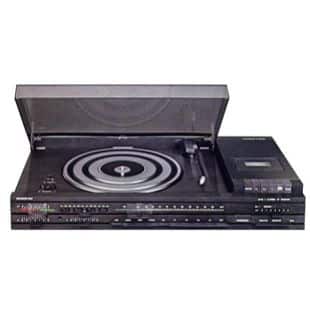
The first Beocenter with three sources, the 3600 was released in only a limited numbers of markets. Now a rare item.

The first Beocenter with three sources, the 3600 was released in only a limited numbers of markets. Now a rare item.
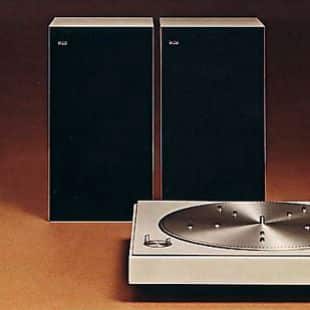
compact, high-fidelity, pressure chamber loudspeaker.
In spite of its modest size, Beovox 1702 was highly efficient and had good sound quality. Frequency range was 50-20.000 Hz and it handled an output of up to 20 watts RMS or 40 watts total music power.
The bass unit had a diameter of 15cm and the treble was a tweeter with a 2,5cm diameter. Beovox 1702 met the DIN 45500 high-fidelity norms.
The speakers could be used as part of Beosystem 1001 (comprising BeoGram 1001 and BeoCord 1001 – see links at bottom of page), for example.
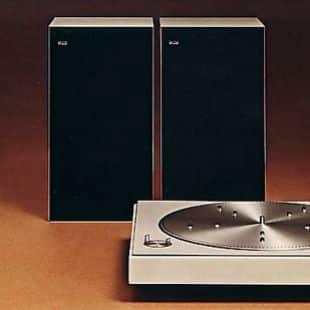
compact, high-fidelity, pressure chamber loudspeaker.
In spite of its modest size, Beovox 1702 was highly efficient and had good sound quality. Frequency range was 50-20.000 Hz and it handled an output of up to 20 watts RMS or 40 watts total music power.
The bass unit had a diameter of 15cm and the treble was a tweeter with a 2,5cm diameter. Beovox 1702 met the DIN 45500 high-fidelity norms.
The speakers could be used as part of Beosystem 1001 (comprising BeoGram 1001 and BeoCord 1001 – see links at bottom of page), for example.
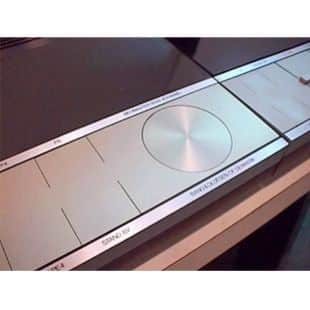
A thoroughgoing ‘black box’. Nothing in the shape of the device revealed how it worked or what it was. Only the inscription on the top of the unit told the user just how the black ‘magic mirror’ was brought to life so it could show which function has been activated. The unit was Bang & Olufsen’s first remote-controlled hi-fi system.
Beomaster 6000 History
Beomaster 6000 was the realisation of the Topline prototype on which work had progressed over the preceding years. The long flat cabinet of the Beomaster 1200 with its operation from the top and the depressed knobs was repeated. But the Beomaster 6000 is the first representative of a new phase in Jacob Jensen’s oeuvre. The slide rule motif symbolised mechanical precision, but now the entire idiom is adapted to the abstraction it was necessary to submit in communicating using electronics.
The visually, symbolically and tactilely easily understood slide rule operation belonged to the age of mechanisation and must be understood in extension of the modernistic machine aesthetics of the 1920s. The design of the Beomaster 6000 emphasises that it belongs to the electronic age and that it is part of the virtual, digital epoch. The volume is regulated stepwise by pressing one button to increase volume and another to reduce it. The buttons are gathered together in one large steel sheet, in which ‘tongues’ have been cut. These each have a play of less than half a millimetre as they are electronic micro-switches. The depressed adjustment knob, which made its first appearance in the General Electric radiogram study model around 1960, is an electronic tuner.
” The great quality of the slide rule motif was that it showed both the user’s input (setting) and the device’s output at the same time. The logical consequence of micro-electricity is a division of input and output – the electronics differ from mechanical operation in that their function is invisible. Jensen does what he can, nevertheless, to make it easy to understand what is happening. Input is placed in a silver-coloured control panel, while output (displays) is gathered under a sheet of dark glass. This magical black sheet, ‘the magic mirror’ that lights up while in use, is to give an extra experience over and above the purely aesthetical. The Beomaster 6000 is a very easy advanced quadraphonic radio. In view of the development team, four sound channels required your being able to adapt the sound to your position in the room. In this way, the first remote-controlled hi-fi system became a reality. ” – taken from ‘Jacob Jensen’ by Christain Holmsted Olesen.
Beomaster 6000 features
At the centre of the Beosystem 6000 was Beomaster 6000, a 4-channel amplifier with an FM tuner. Beomaster 6000 had a built-in SQ decoder (4-channel matrix) and was a full remote controlled system. Five FM stations could be pre-selected and there was manual tuning on the large illuminated FM scale. The FM tuner covered 87,5 – 104MHz. Tuning was carried out via feather-touch controls. The amplifier section was designed to cope with all sound reproduction systems: one, two or four channels. It produced 4×40 watts RMS (4 ohms) or 300 watts total music. 4-channel sound reproduction from records was popularly represented by two systems: CD4 discrete and SQ matrix.
CD4 (Compatible Discrete 4 channel) enabled high-quality sound reproduction with a high degree of separation between the four channels. CD4 was called at the time ‘TRUE 4 channel system’. However, many companies chose the SQ system because it was easily transmitted over FM and SQ records could be played on a high quality stereo record player. However, the price of convenience was less channel separation than the CD4 system afforded.
An SQ matrix decoder was incorporated in Beomaster 6000. Basically, its job was to reconstruct sound information for the two rear speakers. For CD4 records this reconstruction took place in the record-player, Beogram 6000.
Operation
Operation of Beomaster 6000 was child’s play. The large flat operation panel had logically grouped controls for all essential functions. Primary functions (e.g. programme source selection, volume, balance, bass and treble controls) were large, prominent, yet unobtrusive easy-touch buttons, while secondary functions (e.g. loudness, hi and low filters, etc) were smaller push buttons. Volume, balance, bass and treble controls were executed by a feather-touch of the finger tip. A servo-motor did the real work. An illuminated scale indicated position and control levels. There were facilities for frequency correction on all 4 channels. Each channel had a frequency range of 20-30,000 Hz. Distortion was lower than 0.1% at full power output.
Remote Control
The cordless (ultrasonic) remote control for the receiver could be bought as an accessory. This unit put you in true control of the music system. All the following functions could be controlled: volume, balance: left and right speakers; balance: front and rear speakers; five pre-selected FM stations; selection of external programme sources: record-player, tape/cassette-recorder; switching on and off (stand-by).
Connections
All necessary connection facilities were incorporated in Beomaster 6000: 4-channel record player, 2 or 4-channel tape-recorder. 4-channel headphones or two sets stereo headphones.
Beomaster 6000 was perfectly matched to partner the Beocord 5000 cassette recorder (introduced 1975). Beomaster 6000 was featured in an exhibition at New York’s MoMA (Museum of Modern Art) in 1975. At the time of its release it was the flagship of Bang & Olufsen’s hi-fi product range and was quite expensive to purchase. The UK price in 1978 was £581.50.
Accessories:
FM room aerial
An FM aerial type 8902010, was designed for use with Beomaster 6000 to be used in the home, within a certain radius of the radio transmitter. It was easily positioned at the rear of Beomaster 6000 and its two telescopic elements could be extended.
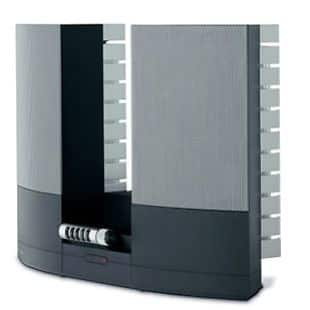
With BeoLab 2000 the customer is able to extend choices with a range of dedicated Beolink® products. These offer the maximum convenience when it comes to moving and controlling sound and vision around the home.
BeoLab 2000 is the second speaker from Bang & Olufsen specially made for the Beolink® system, MasterLink, the first being BeoLab 3500. This product was designed by Anders Hermansen. All its required electronics are housed within the speaker and the only thing needed is a cable to be plugged in. As with all MasterLink products, BeoLab 2000 is totally auto-configurating.
On the front of the speaker there are buttons to select which source to listen: CD, tape and so on, as well as track selection and on/off. There is also a volume control of course. The speaker can also be operated via a remote control – for example the Beolink 1000 or Beo4. The sound is really impressive considering the very small net volume. This speaker is best used in smaller rooms such as kitchens and bedrooms.
In the kitchen, a BeoLab 2000 connected to the BeoSound Ouverture or BeoSound 3000 in the living room will give you hands-on control of various sources. Via the link to the Beovision Avant, you can follow the news on TV and only watch if something catches your interest. In the kitchen, the bathroom or the garage this little active loudspeaker gives you the option of remote or hands-on control of tape, CD, radio, timer and volume.
“When it comes to sound reproduction we believe there’s only one relevant parameter: How close can we come to the originally recorded sound. We feel an obligation not to disturb the intentions of the artist by adding unnatural elements to the acoustic image. Therefore all Bang & Olufsen loudspeakers share the same goal. They differ in size and shape and in terms of sound pressure level. But they are all developed to reproduce the natural, unaltered sound as closely as possible ” – Bang & Olufsen catalogue 2001 – 2002
BeoLab 2000 is a flexible Beolink loudspeaker which is easy to accommodate and gives you the option of hands-on or remote control. On the front panel you choose between CD, tape or radio, turn on & off, up & down. A bracket for wall or corner mounting is included
Why build amplifiers into the loudspeakers instead of keeping them separate?
Because you can reduce the size of the cabinet volume to one-third of the size of a conventional loudspeaker with the same sound capacity. The principle is called Active Loudspeakers, and what you get is a compact loudspeaker that can play at high volume without distortion or damage to its drive units. Furthermore, when amplifier, treble and bass units are paired for the same task, they can be tailored to compensate for each other’s shortcomings. What you hear is music that sounds exactly like the instrument it originally came from.
The fine art of control of BeoLab 2000
A control knob on the front of the BeoLab 2000 allows hands-on operation, when or if a Beo4 remote control is not at hand. A perforated disc inside the knob breaks a beam of light in front of a sensor that counts the number of perforations and adjusts the sound level accordingly. No wear and tear and no distortion from worn out resistors.
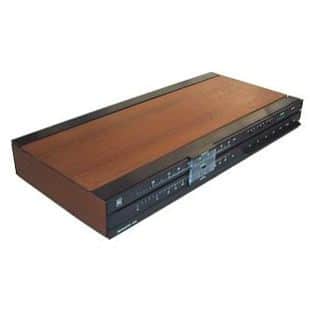
” This title and the picture of Beosystem 1700 might suggest a paradox to many readers. And in a way you are right. But there is a reason why Bang & Olufsen has separated this otherwise perfectly integrated high-fidelity system. The combination possibilities in Beosystem 1700 are so numerous that for many people the entire system is unnecessary. The essential part of the system is BeoLab 1700: a 2 x 20 watts RMS amplifier with ambiophonic stereo facilities.
BeoLab 1700 type 2605 was an amplifier designed to be used with Beomaster 1700 tuner.
The tuner, Beomaster 1700, the cassette-recorder, Beocord 1700 and the record player, Beogram 2000 (not shown) cover nearly all existing programme sources for the reproduction of music. Beovox 2702 loudspeakers complete the system. Beovox 1702 are recommended as side speakers for ambiophony, if this extra sound experience is desired. Now it is up to you to put your ideal Beosystem 1700 together. ”
The unit was a high-fidelity stereo amplifier whose technical specifications exceeded the DIN 45500 high fidelity norms by a wide margin. Frequency range was 20-30.000 Hz and power bandwidth was 10-50.000 Hz. Harmonic distortion was less than 0.1% at the normally used output (50 mW) and less than 0,5% at maximum power output (2 x 20 watts RMS). Music output was 80 watts total. With four loudspeakers – two front and two at the sides, ambiophony (an extension of stereo reproduction) could be achieved.
Apart from loudspeaker connections, there were sockets for tuner, tape recorder, record player and headphones. BeoLab 1700 had slider controls for volume, bass, treble and balance. A push button for LOUDNESS facilitated switching between an objective and a subjective linear reproduction. Monitoring (AB switching) could be carried out on BeoLab 1700 if the connected tape recorder had separate record and play-back heads.
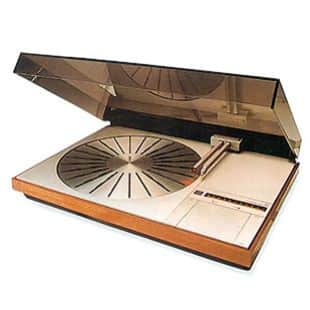
In 1972 and with Beogram 4000, Bang & Olufsen developed the world’s first electronically controlled tangential gramophone. The innovative and extremely stylish record deck was designed with usual flair by Jacob Jensen.
In this pioneering concept, the pick-up moved in a straight line towards the centre of the record parallel with – or tangentially in relation to – the groove. By doing so, the small angular error which would otherwise occur when the pick-up arm moved in an arch on a conventional gramophone was removed. This was possible because the pick-up arm was electronically controlled by a light spot reflected off the record.
This method also ensured that the gramophone started automatically, selected the desired speed – and that the pick-up actually touched the grooves of the record. The combined cartridge/stylus used on Beogram 4000 was the ultra-lightweight SP15 which was engineered by Subir Pramanik especially for this deck.
Yet another sophisticated mechanical design, the double tone arm, demonstrated the break with the past. By using two arms, it was immediately clear that this was a gramophone which worked in a new and different way.
Beogram 4000 was the first of the many tangentially-tracking record players that followed, finished in wood veneer, aluminium and plastic. Designed by Jacob Jensen, Beogram 4000 and seven other B&O products were selected by the Museum of Modern Art in 1972 for its permanent collection of modern design. Jensen aimed at creating a record player which in its simplicity and panache was both timeless and up-to-date in its technical construction. The record player made use of the most advanced techniques; for instance, the electronic tangential pick-up arm, which by moving in a straight angle from the end of the record player always played the record at the correct angle – that which it was created with in the factory. The delicateness of the pick-up arm was also a part of making the design simple and attractive to look at. The same year, Beogram 4000 won the ID Award.
The design and development process of the Bang & Olufsen Beogram 4000 turntable was carried out somewhat different to the normal procedure. Jacob and K G Zeuthen, a civil engineer – who had been one of Denmark’s pioneers in aviation design – developed and constructed a full size working model ready for presentation to B&O. The design incorporated a parallel twin-armed pick-up, one arm for the pick-up and the other arm with an optical device which read the size of the record. Beogram 4000 was put into production without alteration and became a tremendous success. It gained many international design awards and contributed in maintaining B&O’s sharp design profile. In 1972 Beogram 4000 won the iF Design Award and in 1973 it received the Danish ID Award; that same year it was included in the New York’s Museum of Modern Art (MoMA) Design collection. It also received the English Blue Ribbon award that year for outstanding design who labelled the deck as “the most awarded product within the Radio trade”
With his design work, Jacob Jensen helped shape Bang & Olufsen’s product design with its characteristic use of discrete, clear lines and high functionality. It is a design which has helped manifest B&O’s easily-recognisable product identity. Through the assistance of Jacob Jensen, B&O was awarded the Danish Design Centre’s ID Classic Prize in 1990 for its product design through 25 years.
While the CD player has now replaced the gramophone, Beogram 4000 was regularly updated for many years, bearing different names and Type numbers – for the continued pleasure of music lovers who refused to give up their beloved LP collection.
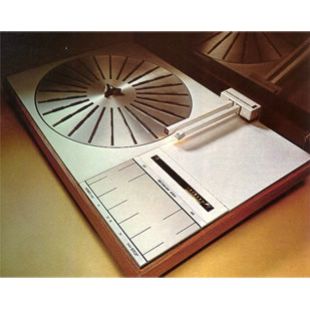
The replacement for the Beogram 4000, this deck actually existed in a number of forms, the first using the AC motor of the 4000 and later ones using a DC motor. Simplified compared to the 4000, it was cheaper to produce, if not buy, but maintained a very similar performance.
In terms of concept, performance and technical design, this record player was very much ahead of its time. All functions were governed by computer-like logic circuits. You just pressed START, that was all. Through the unique detector arm (parallel to the pickup arm) these circuits could judge the size of the record, determine its normal playing speed and instruct the pick-up arm to lower the stylus into the lead-in groove. Within a few seconds you would hear the music. If there was no record on the platter the stylus could not be lowered, so the system was safe as well as simple.
Records could be tracked more accurately because the tangential arm traced a straight line from the record’s edge to its centre, instead of tracing an arc as radial arms do. This method entirely eliminated inward bias (skating effect) and tracking angle error was almost non-existent.
The naked elliptical diamond stylus in the MMC 20EN (former MMC 4000) pickup cartridge helped ensure that Beogram 4002 got all of the information out of your record grooves while handling them in the gentlest possible way.
Bang & Olufsen’s Beogram 4002 turntable was awarded the ‘Gold Sim 74’ and ‘Top Form 74’ prizes in the category of electro-mechanics.
Beogram 4004/4002 could be made up as part of the Beosystem 4400 or the quadraphonic Beosystem 6000 when linked together with other compatible Bang & Olufsen products.
Beogram 4004/4002 was an electronically controlled stereo record player with tangential arm. The unit utilised a belt drive system to control the record deck. Thanks to the incorporation of advanced electronics, several advantages were gained from this new concept in record-players: high specification, supreme automation of all functions and the most gentle treatment of records. The tangential arm moved the pick-up in a straight line towards the centre of the record, reducing tracking error to a mere 0.04%. The record player was fitted with the MMC 4000 pick-up cartridge (later MMC 20EN) which had a frequency range of 20-25.000 Hz ±1.5 dB. It had an integrated, elliptical naked diamond stylus with a stylus pressure of 1g. Rotation of the turntable was governed by a synchronous motor which was power-driven via a stabilised oscillator which made it independent of mains voltage and frequency fluctuations. Wow and flutter was less than ± 0.05 % and rumble better than 65 dB. DIN B weighted. A photocell in the record-player’s second arm registered the size of the record and the speed at which it should be played. Advanced electronics governed the actions of the pick-up arm: lifting, lowering, etc. However, the record-player could be operated manually by use of the large “easy-touch” control plate. Operation of the record deck was very easy as all functions were governed by computer logic circuits. With its tangential detector arm that was parallel to the linear tracking tonearm, the unit could sense the size and speed of the record to be played and lowered the stylus into the lead-in groove. It had cueing controls to raise and lower the tonearm to where you wanted it on the record. If there was no record on the turntable and you pushed START, it would not lower the stylus on the turntable. Manual selectors to determine the speed of the record player were incorporated; however, the turntable was fully automatic so all you had to do was put on the record and press START.
Beogram 4004/4002 was fitted with a hinged dust lid which could be opened to any angle up to about 60 degrees or completely removed by easy sliding action.
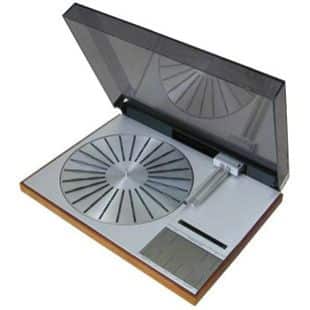
This deck was a variant of the Beogram 4002 but fitted as standard with a CD4 decoder. As with the 4002, there were two clear models , the earlier with the AC motor and the later with a DC motor.
The DIN plug was unusual in that it carried 4 discrete channels and was therefore best suited to the Beomaster 6000 or 3400. It did have a built in RIAA though and would play stereo records perfectly happily as the rear channels could be switched off.
The cartridge specified was the MMC6000, the ultimate cartridge in the range designed by and bearing the name of one of B&O’s pre-eminent engineers, Subir Pramanik.
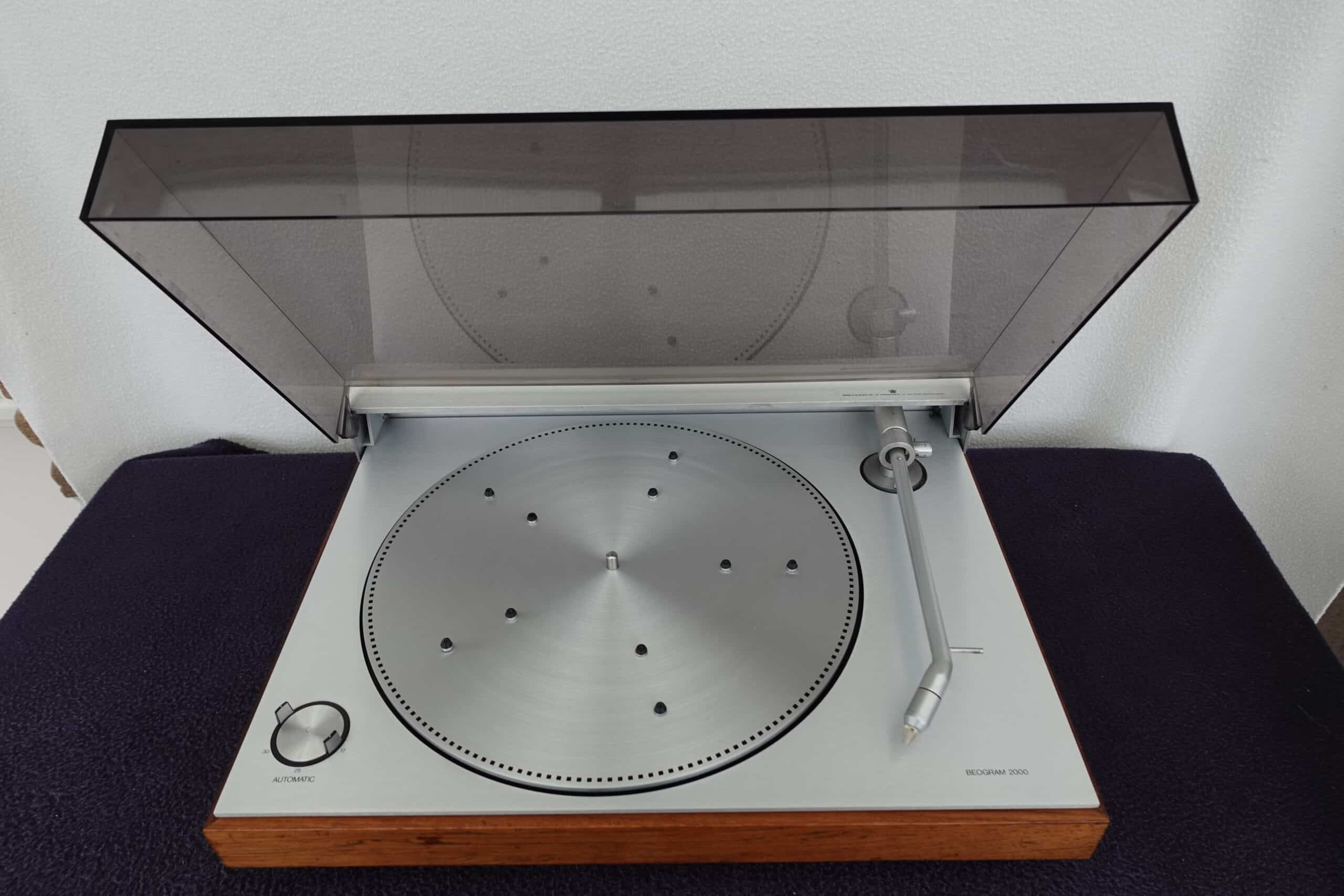
Beogram 2000 was an integrated two-speed (33rpm and 45 rpm) high-fidelity stereo record player with high specifications. But it was the simple, easy operation which was the most unique feature in Beogram 2000. A single master control executed all the essential functions.
All you need to do was to select the size of a record, 7″, 10″ or 12″ and press the button marked LIFT. Immediately, the turntable began to rotate at the correct speed (33 or 45 rpm) and the pick-up lowered into the first groove. At the end of the record, the pick-up arm returned to its resting position and the turntable switched off. Beogram 2000 was fitted with its own pick-up cartridge, SP 10A. This had a spherical naked diamond stylus.
Recommended- stylus pressure was 2 g. Its frequency range was 20-25.000 Hz ±3 dB. Distortion was lower than 1%, wow and flutter lower than 0.12% and rumble better than 60dB. Thanks to the pendulum suspension of the turntable and its pick-up am Beogram 2000 was insensitive to vibrations. A transparent dust lid was fitted to Beogram 2000. It could be opened at any angle up to 60 degrees or you could slide it off with ease.
This deck finally gave the ‘peg platter’ decks a proper lid. Not quite as advanced as the 1202, it was in all ways apart from the lid, a Beogram 1203.